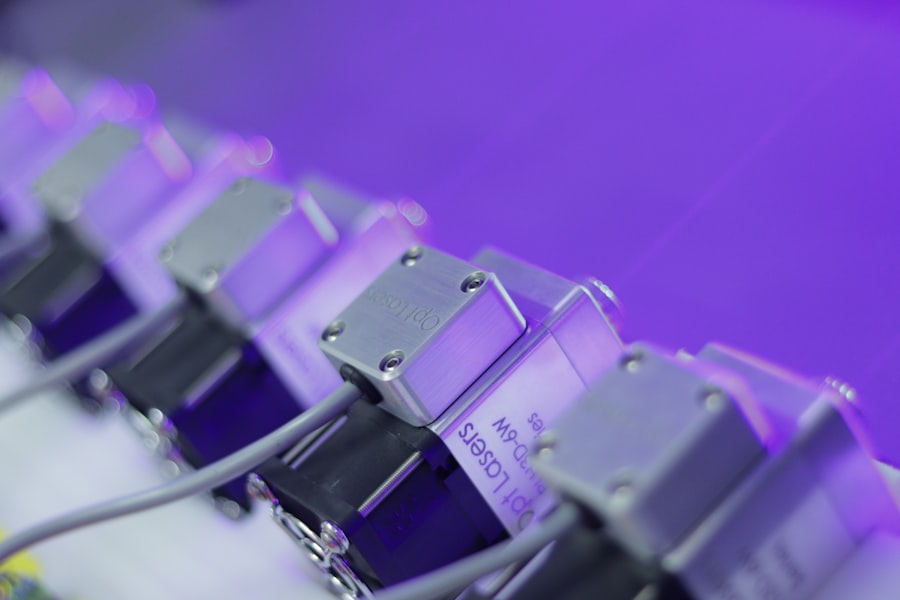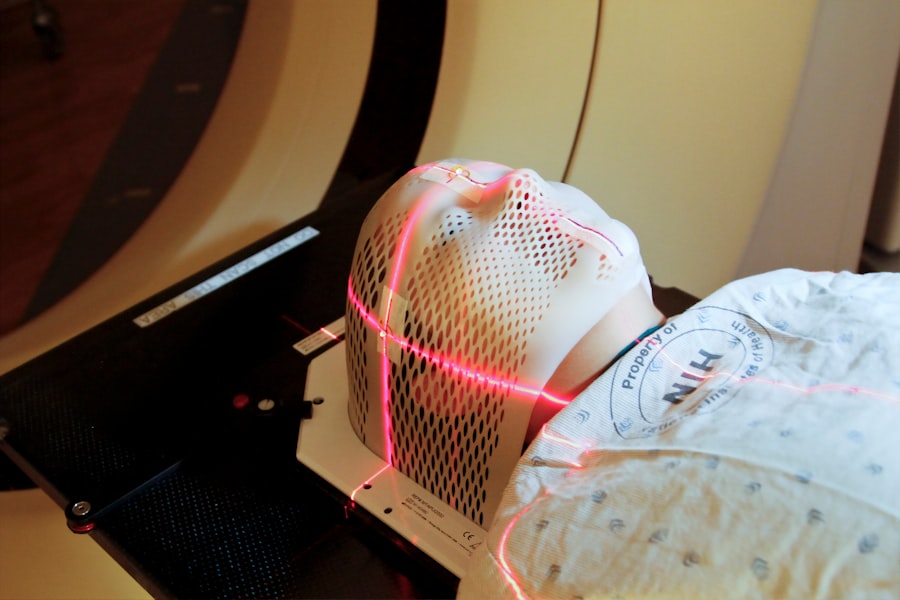After undergoing laser hair removal, you may find yourself feeling excited about the prospect of smooth, hair-free skin. However, it’s crucial to recognize that the journey doesn’t end once the procedure is completed. Aftercare plays a vital role in ensuring that you achieve the best possible results while minimizing any potential side effects.
Understanding the importance of aftercare can significantly enhance your experience and help you maintain the benefits of the treatment. The skin is often sensitive following laser hair removal, and proper aftercare can help soothe any irritation and promote healing. By following a structured aftercare routine, you can reduce the risk of complications such as redness, swelling, or even hyperpigmentation.
Moreover, adhering to aftercare guidelines can optimize the effectiveness of the treatment, allowing you to enjoy long-lasting results. Therefore, taking the time to understand and implement aftercare practices is essential for anyone considering or having undergone laser hair removal.
Key Takeaways
- Aftercare is crucial for successful laser hair removal and to minimize potential side effects
- Do’s for aftercare include keeping the treated area clean and moisturized, and following the specialist’s instructions
- Don’ts for aftercare include exposing the treated area to the sun, picking or scratching the skin, and using harsh products
- Proper hydration and moisturization are essential for promoting healing and preventing complications
- Protect the treated area from the sun by using sunscreen and covering up with clothing or hats
Do’s for Laser Hair Removal Aftercare
When it comes to aftercare for laser hair removal, there are several do’s that you should keep in mind to ensure a smooth recovery process. First and foremost, it is essential to keep the treated area clean. Gently washing the area with mild soap and lukewarm water can help remove any residual gel or debris without causing irritation.
You should also pat the area dry with a soft towel rather than rubbing it, as this can further aggravate sensitive skin. Another important do is to apply a soothing lotion or gel to the treated area. Look for products that contain aloe vera or other calming ingredients, as these can help alleviate discomfort and reduce inflammation.
Additionally, you should consider wearing loose-fitting clothing over the treated area for a few days post-treatment. This will help prevent friction and allow your skin to breathe, promoting a more comfortable healing process. By following these simple do’s, you can significantly enhance your recovery experience.
Don’ts for Laser Hair Removal Aftercare

While there are many things you should do after laser hair removal, there are also several don’ts that are equally important to consider. One of the most critical don’ts is to avoid picking at or scratching the treated area.
Instead, focus on keeping the area clean and moisturized to alleviate any discomfort. Another significant don’t is to avoid exposing the treated area to excessive heat. This includes hot showers, saunas, and intense workouts that may cause sweating.
Heat can exacerbate inflammation and sensitivity in the skin, potentially leading to adverse effects. It’s best to wait at least 48 hours before engaging in activities that may raise your body temperature significantly. By steering clear of these common pitfalls, you can help ensure a smoother recovery and better results from your laser hair removal treatment.
Proper Hydration and Moisturization
| Metrics | Proper Hydration and Moisturization |
|---|---|
| Skin Hydration Level | Optimal: 30-40% |
| Water Intake | 8 glasses per day |
| Moisturizer Application | Twice a day |
| Humidity Level | 40-70% |
Proper hydration and moisturization are crucial components of aftercare following laser hair removal. Keeping your skin hydrated helps maintain its elasticity and overall health, which is particularly important after undergoing a procedure that can leave it feeling sensitive. Drinking plenty of water not only benefits your skin but also aids in the healing process by flushing out toxins from your body.
In addition to internal hydration, external moisturization is equally important. After laser hair removal, your skin may feel dry or tight, making it essential to apply a gentle moisturizer regularly. Look for products that are fragrance-free and designed for sensitive skin to avoid any potential irritation.
Ingredients like hyaluronic acid or glycerin can be particularly beneficial as they help lock in moisture and soothe the skin. By prioritizing both hydration and moisturization, you can support your skin’s recovery and enhance its appearance post-treatment.
Protecting the Treated Area from the Sun
One of the most critical aspects of aftercare for laser hair removal is protecting the treated area from sun exposure. Your skin will be more sensitive following the procedure, making it more susceptible to sunburn and pigmentation changes. To safeguard your skin, it’s advisable to avoid direct sunlight for at least two weeks post-treatment.
If you must be outdoors, wearing protective clothing or seeking shade can help minimize exposure. In addition to physical barriers, applying a broad-spectrum sunscreen with an SPF of 30 or higher is essential when venturing outside. This will provide an extra layer of protection against harmful UV rays that can cause damage and hinder your skin’s healing process.
Reapplying sunscreen every two hours is crucial, especially if you’re sweating or swimming. By taking these precautions seriously, you can protect your skin from potential harm and ensure that your laser hair removal results remain optimal.
Avoiding Certain Activities and Products

After laser hair removal, it’s important to be mindful of certain activities and products that could interfere with your recovery process. For instance, you should avoid swimming in pools, hot tubs, or natural bodies of water for at least 48 hours post-treatment. These environments can expose your skin to bacteria and irritants that may lead to complications such as infections or prolonged irritation.
Additionally, be cautious about using harsh skincare products on the treated area during your recovery period. Exfoliants, retinoids, and products containing alcohol can irritate sensitive skin and should be avoided until your skin has fully healed. Instead, opt for gentle cleansers and soothing moisturizers that will support your skin’s recovery without causing further irritation.
By steering clear of these activities and products, you can create an optimal environment for healing and ensure that your results are as effective as possible.
Recognizing and Addressing Potential Side Effects
While laser hair removal is generally safe and effective, it’s essential to be aware of potential side effects that may arise during your recovery period.
These symptoms are typically temporary and should subside within a few days.
However, if you notice any unusual changes such as severe pain, blistering, or prolonged redness, it’s crucial to contact your laser hair removal specialist immediately. In addition to recognizing side effects, knowing how to address them is equally important. For mild discomfort or swelling, applying a cold compress can provide relief and reduce inflammation.
Over-the-counter pain relievers may also help alleviate any discomfort you experience during this time. However, always consult with your specialist before taking any medication to ensure it’s appropriate for your situation. By being proactive in recognizing and addressing potential side effects, you can navigate your recovery more effectively.
Following Up with Your Laser Hair Removal Specialist
Finally, one of the most important aspects of aftercare is maintaining open communication with your laser hair removal specialist. Scheduling follow-up appointments allows them to monitor your progress and address any concerns you may have regarding your treatment results or recovery process. These check-ins are an excellent opportunity for you to ask questions about aftercare practices or discuss any side effects you’ve experienced.
Moreover, follow-up visits enable your specialist to assess how well your skin has responded to the treatment and determine if additional sessions are necessary for optimal results. They can provide personalized recommendations based on your unique skin type and needs, ensuring that you achieve the best possible outcome from your laser hair removal experience. By prioritizing follow-up appointments and maintaining communication with your specialist, you can enhance your overall satisfaction with the treatment while ensuring a smooth recovery process.
In conclusion, understanding the importance of aftercare following laser hair removal cannot be overstated. By adhering to recommended do’s and don’ts, prioritizing hydration and sun protection, avoiding certain activities and products, recognizing potential side effects, and maintaining communication with your specialist, you set yourself up for success in achieving smooth and beautiful skin post-treatment. Taking these steps will not only enhance your recovery experience but also maximize the long-term benefits of your laser hair removal journey.
If you’re looking for more tips on laser hair removal aftercare, check out this article on 5 Essential Tips for Post-Laser Hair Removal Care. This article provides additional insights on how to properly care for your skin after a laser hair removal treatment to ensure the best results. It’s always important to follow the recommended do’s and don’ts to maintain the health and appearance of your skin.
FAQs
What is laser hair removal aftercare?
Laser hair removal aftercare refers to the steps and precautions that should be taken after undergoing a laser hair removal treatment to ensure proper healing and optimal results.
What are the do’s for laser hair removal aftercare?
Some of the do’s for laser hair removal aftercare include keeping the treated area clean and moisturized, avoiding sun exposure, wearing loose clothing, and following the post-treatment instructions provided by the technician.
What are the don’ts for laser hair removal aftercare?
Some of the don’ts for laser hair removal aftercare include avoiding hot showers, saunas, and steam rooms, refraining from picking or scratching the treated area, and staying away from harsh chemicals or exfoliants.
How long should I wait before exposing the treated area to the sun?
It is recommended to wait at least 2 weeks before exposing the treated area to the sun to prevent any potential complications such as hyperpigmentation.
Can I shave the treated area after laser hair removal?
Yes, shaving is allowed after laser hair removal, but it is important to wait for the skin to heal and any redness to subside before doing so.
Is it safe to apply makeup on the treated area after laser hair removal?
It is generally safe to apply makeup on the treated area after laser hair removal, but it is important to use gentle, non-comedogenic products to avoid irritation.
How long should I wait before resuming physical activities after laser hair removal?
It is recommended to wait at least 24-48 hours before resuming physical activities after laser hair removal to allow the skin to heal and reduce the risk of complications.
Can I use exfoliating products on the treated area after laser hair removal?
It is best to avoid using exfoliating products on the treated area for at least 1-2 weeks after laser hair removal to prevent irritation and potential damage to the skin.
What should I do if I experience any unusual side effects after laser hair removal?
If you experience any unusual side effects after laser hair removal, such as severe redness, swelling, or blistering, it is important to contact your technician or healthcare provider immediately for further evaluation and guidance.
How many laser hair removal sessions are typically needed for optimal results?
The number of laser hair removal sessions needed for optimal results can vary depending on individual factors such as hair color, skin type, and the area being treated, but most people require 6-8 sessions spaced several weeks apart.




